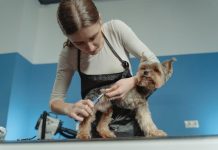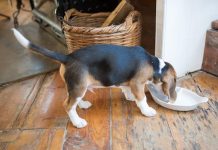Welcoming a new puppy into your home is an exciting and joyful experience, filled with moments of laughter and endless affection. However, along with the cuddles and playtime comes the responsibility of ensuring your furry friend stays healthy and happy. One of the common challenges new pet owners face is preventing flea infestations, which can cause discomfort and health issues for your puppy. In this article, we will explore the best ways to safeguard your little companion against these pesky parasites. With a few proactive steps and thoughtful care, you can create a safe and comfortable environment for your puppy to thrive, free from the nuisance of fleas. Let’s dive into some effective strategies to keep your puppy’s tail wagging and your home flea-free.
Understanding Flea Behavior and Lifecycles
To effectively prevent flea infestations in puppies, it’s essential to have a keen understanding of their behavior and lifecycle. Fleas are not just pesky; they are persistent hitchhikers that thrive in warm, humid environments. The lifecycle of a flea includes four stages: egg, larva, pupa, and adult. This cycle can complete in as little as three weeks under favorable conditions, making early intervention crucial. Recognizing the signs of each stage can help in implementing timely measures to control their population.
- Egg Stage: Flea eggs are tiny and can easily fall off your puppy’s fur, landing in bedding, carpets, and furniture. Regular cleaning and vacuuming of these areas are essential.
- Larva Stage: Larvae avoid light and burrow into fabrics and crevices. Washing your puppy’s bedding in hot water can eliminate these hidden pests.
- Pupa Stage: This stage is the hardest to control as pupae are cocooned and resistant to many treatments. Using a high-powered vacuum can help remove them from your home.
- Adult Stage: Adult fleas are the ones you’ll notice on your puppy. Using vet-recommended topical treatments can effectively target these visible pests.
By understanding these stages, you can take a proactive approach, reducing the chances of a full-blown infestation. Regular grooming and checking for signs of fleas can further safeguard your puppy from these unwelcome guests.
Creating a Safe and Flea-Free Environment for Your Puppy
To ensure your puppy grows up healthy and happy, it’s crucial to maintain a clean environment that’s free from fleas. Begin by focusing on regular cleaning practices. Vacuum your home frequently, especially carpets, rugs, and any upholstery where fleas might hide. Don’t forget to wash your puppy’s bedding in hot water at least once a week. For extra protection, consider using pet-safe flea sprays or powders around the house, paying special attention to areas where your puppy spends the most time.
In addition to cleaning, create a barrier to keep fleas out. Install screens on windows and doors to prevent fleas from entering your home. Keep your yard tidy by mowing the lawn regularly and removing any debris where fleas might thrive. Planting flea-repelling plants such as lavender or rosemary around your garden can also be beneficial. Lastly, schedule regular veterinary check-ups to ensure your puppy receives the appropriate flea prevention treatments, like topical solutions or oral medications, that are safe for their age and weight.

Choosing the Right Preventative Treatments for Your Pup
When it comes to safeguarding your young canine from fleas, early intervention is key. Puppies are particularly susceptible to these pesky parasites, and choosing the right preventative treatments can make all the difference in their health and comfort. Topical treatments are a popular choice; these are easy to apply and start working almost immediately. Products containing fipronil or imidacloprid are known for their effectiveness. Always ensure the treatment is appropriate for your puppy’s age and weight, as some formulations are designed specifically for young dogs.
Another excellent preventive measure is the use of oral medications. These treatments often come in the form of a chewable tablet and can provide protection for up to three months. Look for ingredients like spinosad or afoxolaner for reliable results. Additionally, consider incorporating natural options such as essential oils or herbal sprays. While these may not be as potent as pharmaceutical solutions, they can offer an added layer of protection. Remember to consult with your veterinarian to tailor a prevention plan that suits your pup’s specific needs.

Regular Grooming and Health Checks as Preventative Measures
Ensuring your puppy receives regular grooming and health checks is a cornerstone of maintaining their well-being and keeping pesky fleas at bay. Grooming is not just about keeping your puppy looking their best; it serves as a critical opportunity to check for any signs of flea activity. Brushing your puppy’s coat thoroughly helps to remove any fleas and flea dirt, which are tiny black specks of flea feces. Use a fine-toothed comb specifically designed for fleas to ensure no unwanted guests are hiding in their fur.
- Inspect your puppy’s skin during grooming sessions for redness, bumps, or irritation.
- Look for flea eggs, which are small, white, and often found near the base of the hair.
- Check the ears and belly, as fleas often hide in these warm areas.
In addition to grooming, regular veterinary health checks are essential. Your vet can spot signs of flea infestations early and recommend the best preventative treatments tailored for your puppy’s needs. Routine visits also provide a chance to discuss any changes in behavior or health that might indicate a flea problem. By incorporating these practices into your puppy care routine, you can effectively reduce the risk of flea infestations and keep your furry friend happy and healthy.
















